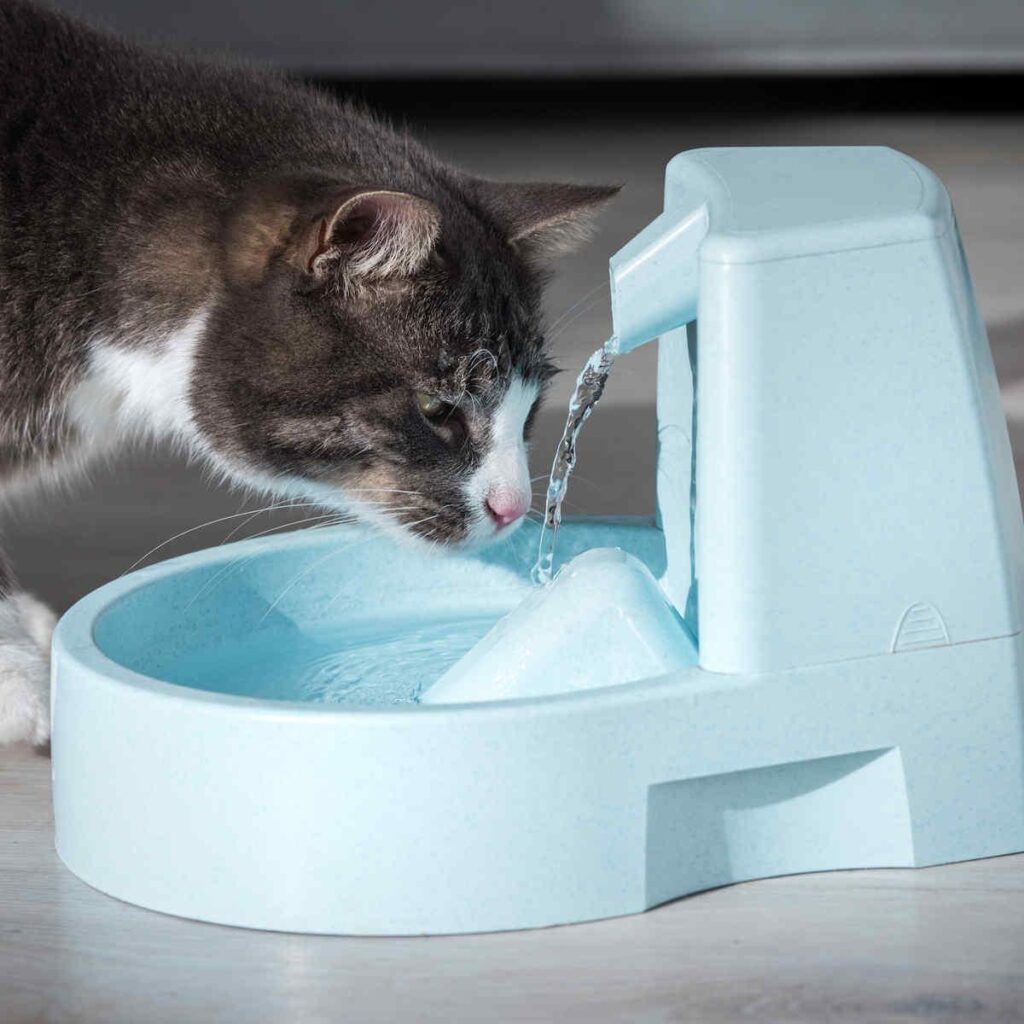Cats, by nature, are desert-adapted creatures with a low thirst drive. Their ancestors survived on moisture rich prey, not standing bowls of water. Yet in modern homes, where dry kibble dominates and activity levels are often reduced, chronic dehydration has become a silent threat. A cat drinking fountain isn’t just a gadget it’s a behavioral and physiological solution to a problem many owners don’t realize exists.
Hydration for cats is directly linked to kidney function, urinary tract health, and overall vitality. Unlike dogs, cats rarely seek out water unless prompted by environmental cues. The sound and movement of flowing water mimic natural sources, triggering instinctual curiosity and encouraging more frequent drinking. Studies in feline behavior show that cats are significantly more likely to drink from a fountain than a stagnant bowl, especially if the water is filtered and cool. This increased intake can reduce the risk of urinary crystals, bladder inflammation, and even kidney disease conditions that often go unnoticed until they become severe.
Beyond physical health, the presence of a drinking fountain can enrich a cat’s emotional landscape. Flowing water introduces sensory stimulation into the environment, offering novelty and engagement without overstimulation. For indoor cats, whose worlds are often limited to a few rooms, this small addition can break monotony and provide a sense of control. Cats may return to the fountain repeatedly, not just to drink, but to observe, paw at, or listen to the gentle stream. These micro-interactions contribute to mental well-being and reduce stress related behaviors like over-grooming or aggression.
The design of the fountain matters. Materials like stainless steel or ceramic are preferred over plastic, which can harbor bacteria and cause chin acne. Multi-tiered fountains offer accessibility for senior cats or those with arthritis, while quiet motors ensure the device doesn’t become a source of anxiety. Maintenance is key filters should be changed regularly, and the unit cleaned weekly to prevent biofilm buildup. Owners who treat the fountain as part of their cat’s wellness routine, rather than a passive accessory, see the greatest benefits.
Globally, the rise in popularity of cat drinking fountains reflects a broader shift toward proactive pet care. As veterinary costs climb and awareness of feline specific needs grows, more owners are investing in preventative tools. The fountain stands out because it addresses a foundational need hydration while also supporting behavioral enrichment and emotional connection. It’s a rare product that touches multiple dimensions of health without requiring complex training or dietary changes.
In multi-cat households, fountains can also reduce tension. By offering a shared but dynamic resource, they help distribute access and minimize competition. Cats that might avoid communal bowls due to hierarchy or anxiety often feel safer approaching a flowing source. This subtle shift in resource management can improve group dynamics and reduce stress-related illnesses.
Ultimately, the value of a cat drinking fountain lies in its simplicity. It doesn’t promise miracles, but it delivers consistent, measurable benefits across physical and emotional domains. For owners seeking to elevate their cat’s quality of life, few investments offer such a high return. Hydration for cats isn’t just about water it’s about how that water is offered, experienced, and integrated into daily life. And in that quiet stream, there’s a ripple effect of health, happiness, and harmony.
Available Cat Breeds:

